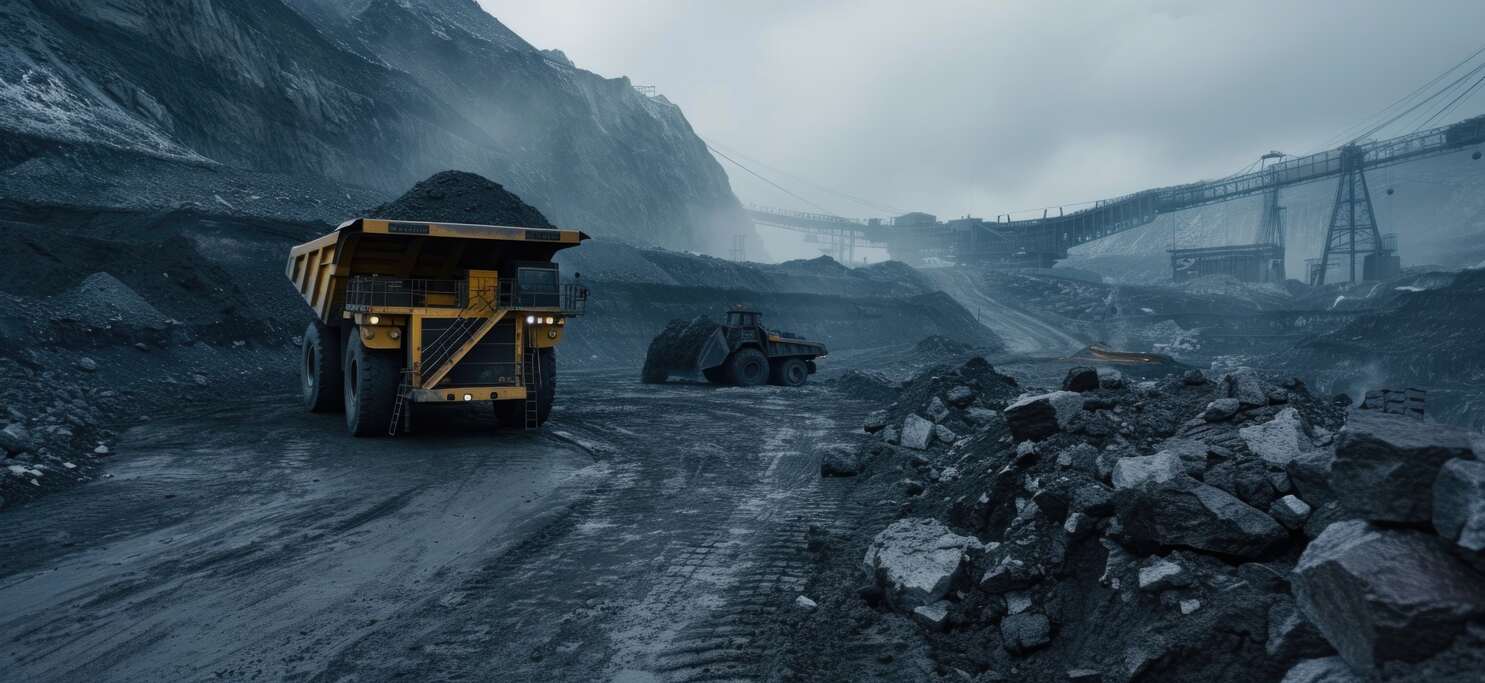Coal India Reboots 32 Mines as Clean Energy Momentum Stalls
In a major shift back to traditional energy sources, Coal India Ltd. (CIL), the world’s largest coal miner, has announced the reopening of 32 defunct mines and the launch of up to five new greenfield projects—a drastic response to India’s mounting energy demands in the face of underperforming renewable infrastructure.

Why the Sudden Coal Resurgence?
India’s surge in electricity consumption, driven by industrial expansion, urbanisation, and rural electrification programs, is testing the limits of renewables. Despite consistently adding solar and wind capacity, renewables are failing to match the scale and reliability coal provides. According to Ember, clean energy investment in India stood at $13 billion in 2024, dramatically short of the $68 billion needed yearly to achieve the 2030 target of 500 GW.
For 2024, coal still accounted for 74% of India’s electricity generation, a figure the government hopes to reduce only gradually—to 55% by 2030, and further to 27% by 2047. Efforts to add coal-fired capacity contrast with the addition of 28 GW of renewables in the last year
Mining Revival: Old Mines, New Partnerships
The 32 mines slated for reopening were previously shut due to “manual mining” without mechanisation and outdated equipment. Under the revived strategy, these will be operated using revenue-sharing agreements with private partners—27 tenders have already been awarded, with five more awaiting finalisation.
At least six mines are expected to resume production in FY 2025–26, a move aimed at reducing coal imports and boosting domestic supply. In parallel, Coal India plans five greenfield opencast mines to further scale production.
Currently, CIL operates 310 mines supplying around 75% of the country’s coal demand, and produced 781 million tonnes last year—on track to exceed 1 billion tonnes by 2029.
While sweeps of solar and wind projects continue, challenges are slowing progress:
Currently, CIL operates 310 mines supplying around 75% of the country’s coal demand, and produced 781 million tonnes last year—on track to exceed 1 billion tonnes by 2029.
- Underinvestment: A gap of over $55 billion annually in renewables spending remains a critical bottleneck.
- Infrastructure delays: Land acquisition difficulties, slow power‑purchase agreements (PPAs), and grid integration issues plague renewable rollouts.
- Grid resilience: Coal remains vital for providing base‑load and grid stability during periods of low sunlight or wind.
Renewable adoption is climbing—India now has over 220 GW of clean capacity as of March 2025, and recorded its largest single-year addition of 30 GW in FY 2024–25. However, coal-fired plants still generate 70–74% of the country’s electricity.
Coal India’s Sustainability Vision
Despite the renewed reliance on coal, CIL’s leadership insists this move fits within India’s long-term environmental goals. Chairman PM Prasad stated that coal usage will peak by 2035, flatten, and begin to decline toward a phase-down by 2070, aligning with the net-zero ambition.
Additionally, Coal India is actively investing in solar and wind energy, including supplying 4,500 MW of green power for new green ammonia plants, building pumped hydro storage, and repurposing de‑coaled mines for renewables and storage projects.
Coal in the Broader Energy Mix
India’s strategy has been one of parallel growth, not substitution. While aiming to add 500 GW of renewables by 2030, the country also plans to increase coal-fired capacity from 222 GW to 302 GW by 2031–32, adding nearly 80 GW. This approach acknowledges both growth imperatives and political-economic pressures tied to coal regions.
Coal’s socio-economic role remains crucial: it supports employment and regional stability in coal-dependent zones, underscoring why a purely green pivot isn’t yet feasible.
Environmental & Public Health Concerns
Coal production and combustion come with heavy environmental costs:
- Air pollution from coal correlates with asthma, cancer, heart/lung disease, and leads to acid rain and global warming.
- Coal ash affects water and soil quality, harming human health and ecosystems.
- Local communities—like those in the Hasdeo Arand region—often protest mining over ecological disruption and land rights.
Navigating the Transition: Policy & Technology
India’s coal strategy incorporates emerging technologies and phased retirement:
- Retrofitting existing plants with carbon-capture, biomass co-firing, or flexible generation could support greener operations by 2035–40.
- Pumped storage in decommissioned mines enhances grid flexibility and balances intermittent renewable supply .
- Policy shifts—including easing long-term coal supply contracts for IPPs and incentivising pit-head plants—are expected to grease the development of efficient coal infrastructure while supporting renewable uptake.
Balancing Urgency with Vision
- Coal India’s revival reflects a strategic recalibration: ensuring energy security today while building the groundwork for a carbon-neutral future. The coal revival is being framed as temporary—necessary until renewables, storage, and grid upgrades mature.
What Lies Ahead?
- Production trajectory: CIL aims to reach 1 billion tonnes output by 2029, with national coal output forecast to grow 6–7% annually to 1.5 billion tonnes by 2030.
- Renewables scaling: India must ramp up annual investment to $68 billion to meet its 500 GW target—a steep climb from current levels.
- Grid upgrades: Integration of storage and flexible grid controls will determine how quickly renewables can take over baseload duties.
- Socio-environmental trade-offs: Land conflict, community consent, rehabilitation, and ecological safeguards will shape future mining and renewable installations .
Conclusion
Coal India’s decision to reopen 32 old mines and initiate new projects is a strategic pause, not a retreat. It is a calculated move to stabilize India’s power supply amid a clean energy cliff—renewables are promising, but not yet ready to meet soaring demand alone.
As renewable and storage infrastructure scales, coal’s dominance will likely taper—though perhaps more slowly than climate advocates hope. India’s twin track approach—bolstering coal capacity while investing in green energy and grid resilience—reflects a pragmatic response to the world’s growing energy challenges.
India is racing to power a future defined as much by aspiration as by ambition. The question now hinges on whether its coal‑renewable balancing act can evolve into a sustainable energy transformation—before the environmental and social costs become irreversible.












